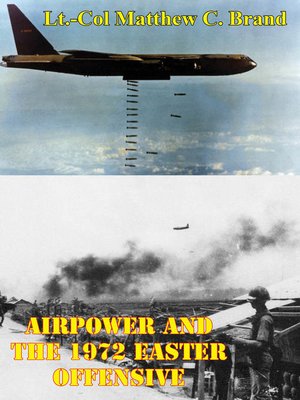
Sign up to save your library
With an OverDrive account, you can save your favorite libraries for at-a-glance information about availability. Find out more about OverDrive accounts.
Find this title in Libby, the library reading app by OverDrive.



Search for a digital library with this title
Title found at these libraries:
| Library Name | Distance |
|---|---|
| Loading... |
In the spring of 1972, North Vietnam launched a massive, three-pronged attack into South Vietnam that was eventually repulsed by South Vietnamese forces, United States (US) advisors and massive amounts of American airpower. The problem is determining what factors were key to South Vietnam's successful defense. To that point, this thesis will address the overall effectiveness of US airpower in defeating North Vietnam's attack. This paper first examines the strategic and operational environment surrounding the 1972 offensive, including the role and influence that the leaders of the US, Saigon, Hanoi, China, and the Soviet Union had on the conflict. It then shifts to the three primary tactical battles, describing each in detail, from the initial communist successes to their ultimate defeat. Finally, the analysis focuses specifically on airpower's role, from the massive strategic deployment that doubled the available assets in theater in just over a month, to its operational success striking targets in North Vietnam, to its tactical successes on the various battlefields of South Vietnam. Ultimately, this analysis determines that US airpower, with US advisors playing a critical enabling role, was the decisive element in the defeat of North Vietnam's Easter Offensive.







